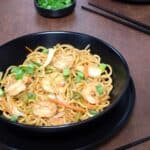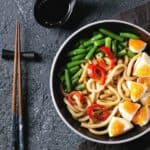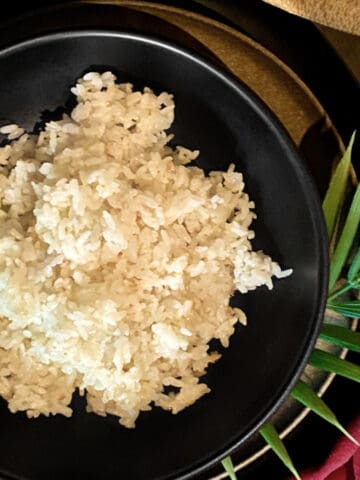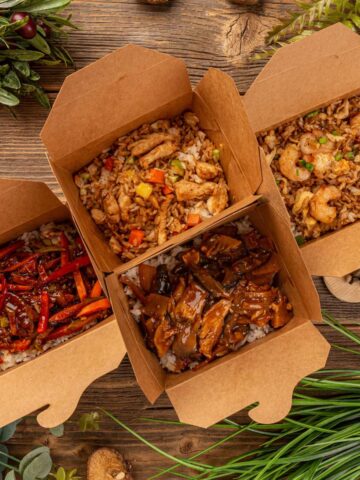Rice is a fundamental food in numerous cultures and a staple for billions worldwide. With a history stretching back to ancient China, rice cultivation now spans from North America to Southeast Asia. Not only is rice delicious and versatile, but it also offers various health benefits. Let's delve into the world of rice, exploring its many types and the best ways to use them.
One of my favorite rice recipes is Sinangag, a popular Filipino recipe for Garlic Fried Rice. Whenever we go camping, this is one of the dishes I bring, which is a favorite among my camping friends. We start with the rice, then add anything from tomatoes to spam! Why not?
Jump to:
What Is Rice
Rice is a cereal grain cultivated in wet environments, mainly in Asia. It has been a staple food for thousands of years, tracing its roots back to ancient China. Today, it’s not just confined to Asian cuisine but has found its way into various dishes around the world.

Many Types Of Rice And Their Varieties
Countless rice varieties are available in the grocery store, but they can generally be categorized into three types based on grain size: long, medium, and short.
Long-Grain Rice
Regular White Rice: The most common type of rice, with fluffy grains when cooked.
Brown Rice: Whole grain rice with the bran layer intact, offering a nutty flavor and numerous health benefits. Varieties include brown basmati rice and regular brown rice.
Wild Rice: Native to North America, it's technically not rice but grass. It has a chewy texture and a unique flavor.
Jasmine Rice: An aromatic rice primarily grown in Southeast Asia. When cooked, it’s slightly sticky.
Basmati Rice: Another aromatic variety, it’s known for its fluffy texture.
Medium-Grain Rice
Sushi Rice (or Japonica Rice): It has a higher starch content, making it slightly sticky, ideal for sushi rolls.
Valencia and Bomba Rice: Used in Spanish rice dishes like paella.
Arborio Rice: An Italian variety popular for its creamy texture, primarily used in risottos.
Vialone Nano: Another Italian rice, less known than Arborio but also used in creamy dishes.
Short-Grain Rice
Sticky Rice (or Glutinous Rice or Sweet Rice): Despite its name, it doesn’t contain gluten. It's sticky when cooked, making it perfect for rice balls and desserts.
Black Rice (or Forbidden Rice): Once reserved for Chinese royalty, this rice turns purple when cooked and has a nutty flavor.
Red Cargo Rice and Himalayan Red Rice are whole-grain rice varieties with a firm texture.
Other Notable Varieties
Carolina Gold: A cherished rice in the United States known for its slightly nutty taste and pleasant, distinct texture.
Purple Thai Rice: A blend of black and white rice with a sweet, nutty flavor.
How to Cook the Perfect Rice
Regardless of the type of rice, the key to cooking it perfectly lies in understanding its water absorption rate and cooking time. Here's a quick guide:
- Rinse the Rice: Wash your chosen variety of rice under cold water until the water runs clear. This removes excess starch, preventing overly sticky rice.
- Water-to-Rice Ratio: A cup of rice typically needs about 2 cups of water, but this can vary. For example, brown varieties often require more water than regular white rice.
- Cooking: Use a pot or rice cooker. After boiling, reduce the heat to low and let it simmer. Cooking times can range from 20 minutes (white jasmine rice) to 45 minutes (brown basmati rice).
- Resting: Once cooked, remove from heat and let it sit for about 10 minutes to achieve the desired texture.
Choosing the Right Rice for Your Needs
Asian Dishes: Opt for sticky or sushi rice.
Savory Dishes: Long-grain varieties like jasmine or basmati impart a fluffy texture and aromatic essence.
Desserts and Rice Pudding: Short-grain or medium-grain rice, thanks to their higher starch content.
Rice Salads: Use whole grain rice or brown varieties for a chewier texture and nutty flavor.

Rice is more than just a side dish; it's a culinary world waiting to be explored. With so many different types of rice available - each with its unique flavor, texture, and use - your culinary adventures can be endlessly exciting. Whether you're seeking the perfect rice for sushi, a savory dish, or a sweet treat, understanding the various rice varieties is your first step to creating mouthwatering dishes. Remember, choosing the best rice depends on personal preferences and your crafting dish. So, explore and experiment next time you’re in the rice aisle!
FAQ
The primary difference lies in their size and shape. Short grains are plump and almost round, while medium grains are slightly longer but still relatively chubby. Long-grain rice is slender and elongated.
Short-grain rice is perfect for making sushi because it has a sticky texture when cooked. This stickiness helps hold together those delicate sushi rolls we all love.
Generally, shorter-grain rice tends to cook faster than its longer counterparts. Remember this when following a recipe or adjusting cooking times based on personal preference.
Long-grain varieties like jasmine or basmati are perfect for stir-fry recipes. Their individual grains remain separate after cooking, adding a fluffy texture to your dish.
Absolutely! While each type has unique characteristics, you can often substitute one with another in most recipes without major issues. Just keep in mind that texture and cooking times may vary slightly.

Instructions
Long-Grain Rice
- SHAPES: Slender and elongated.
- TYPES: Regular white rice, brown rice, wild rice, jasmine rice, and basmati rice.
Medium- Grain Rice
- SHAPES: Slightly longer but still relatively chubby.
- TYPES: Sushi rice (Japonica rice), valencia or bomba rice, arborio, and vialone nano rice.
Short-Grain Rice
- SHAPES: Plump and almost round.
- TYPES: Sticky rice (glutinous or sweet rice), black rice (forbidden rice), red cargo rice, and Himalayan red rice.
Rice Recipes
Looking for recipes using rice? Try these:
What Goes With Rice
Any of the recipes on this blog goes great with rice! These are my favorites:

























Comments
No Comments